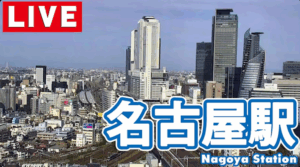The Nagoya Expressway (Nagoya Kosoku): Navigating Urban Highways in Nagoya
The Nagoya Expressway (名古屋高速道路, Nagoya Kōsoku Dōro), often shortened to “Nagoya Kosoku” (名古屋高速), is a network of urban expressways in and around Nagoya, Japan. While primarily used by local residents and businesses, it’s important for tourists and foreign residents to understand the system if they plan to drive in the Nagoya area.
Key Features Relevant to Tourists:
- Urban Network: The Nagoya Expressway is a network of elevated highways that run through and around the city of Nagoya. It is mostly within the city limits and not intended for long-distance travel.
- Convenient for Reaching Certain Destinations: While complex, the Nagoya Expressway can be useful for reaching certain destinations within the city or in the surrounding areas, particularly if you’re short on time or want to avoid surface street traffic.
- ETC (Electronic Toll Collection) is Recommended: Using ETC (Electronic Toll Collection) is highly recommended as it allows for smooth passage through toll gates without stopping to pay cash. You can rent ETC cards if you are only visiting.
- Toll System: The Nagoya Expressway uses a toll system. You’ll typically receive a ticket when you enter and pay the toll when you exit, based on the distance traveled. ETC users have tolls automatically deducted.
- Complex Interchanges: The interchanges can be complex and require careful attention to signage.
- Japanese Signage: While some signage may have English translations, it’s primarily in Japanese. A GPS navigation system is highly recommended.
Points to Consider:
- Japanese Driving Laws Apply: All Japanese driving laws apply on the Nagoya Expressway.
- Speed Limits: Speed limits are typically lower than on rural expressways, often around 60-80 km/h (37-50 mph).
- Traffic Congestion: Traffic congestion can be heavy, especially during rush hour.
- Limited Rest Areas: Rest areas are not as frequent or as large as on rural expressways.
- Cost: Tolls can add up quickly, especially if you are not using ETC to get a discount.
Tips for Navigating the Nagoya Expressway:
- Use a GPS Navigation System: A GPS navigation system is essential for navigating the Nagoya Expressway. Make sure the system is updated and has accurate maps.
- Plan Your Route in Advance: Before you start driving, plan your route carefully and familiarize yourself with the interchanges.
- Pay Attention to Signage: Carefully read the signage and follow the directions.
- Drive Safely: Obey the speed limits and drive defensively.
- Consider Alternative Transportation: Depending on your destination, public transportation (trains and subways) may be a more convenient and cost-effective option. Especially in the city center.
Alternative Transportation Options:
- Nagoya Subway: An extensive subway system covers most of the city.
- JR Lines: Several JR lines run through Nagoya.
- Meitetsu Lines: Connect Nagoya to other cities in the Aichi Prefecture and beyond.
- Buses: Local buses cover a wide area.
- Taxis: Readily available, but can be expensive.
In Summary:
The Nagoya Expressway can be a useful tool for navigating the Nagoya area, but it’s important to be aware of the complexities of the system. A GPS navigation system is essential, and careful planning is recommended. Consider whether public transportation might be a more convenient and cost-effective option, especially if you are primarily visiting the city center. If you are renting a car, be sure to ask about ETC card rental.
